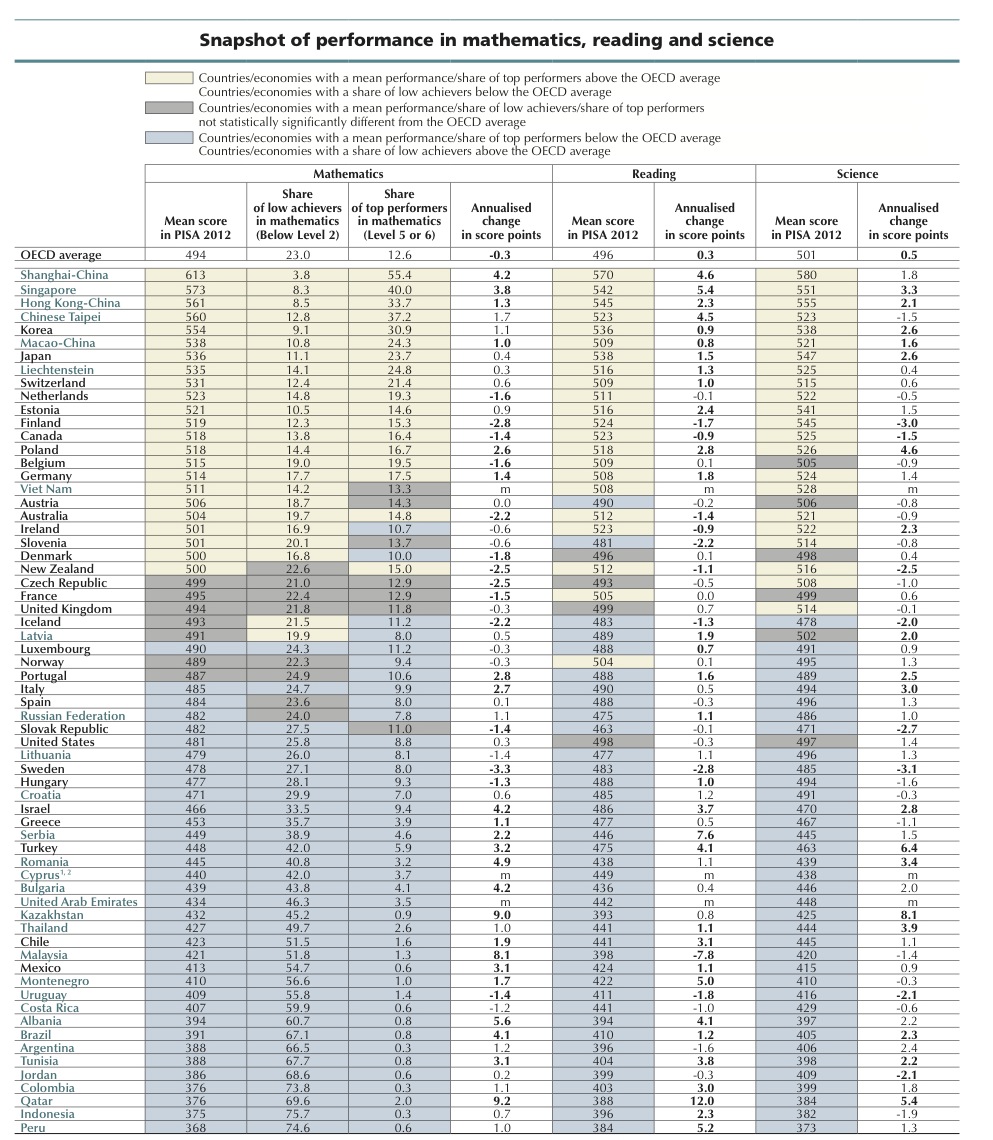- Belgium comes to Yamashita Park
- Residential Villa in Phuket Entices Remote Workers With Long-Stay Rates
- Rare pieces of French glass art at the Mirai Museum of Art
- Feast on fresh fish and seafood at the 2024 ‘Sakana’ Festival
- Would you like to ride in a Louis Vuitton gondola lift?
- Naked Snow Aquarium
- Festive lights at Yomiuriland will get you feeling the holiday vibes
What 15-year olds know and what they can do with what they know

The title is the subject of OECD’s study measuring the knowledge and skills of high school students belonging to the 15-year-and-3-month up to 16-year-and-2-month age range from participating countries and how the results will impact their present and future career prospects in the modern society.
In the real world, what people can do with what they know reaps more reward than those who simply know. The 2012 study by OECD, examined reading, mathematics, science and problem-solving skills of students in various countries. Read: What the future needs
The skills of 510,000 students from 34 OECD (Organisation for Economic Co-operation and Development) member countries were put to test by a global metric for quality, equity and efficiency in school education called the Programme for International Student Assessment (PISA).
The results reveal that Japan, although behind the Chinese-speaking countries in terms of scores, is consistently on the top 10 list. Why are kids learning Mandarin?
Here are the top performing countries: (Note: Only countries who participated in the test are listed here)

What Students Know and Can Do: Student Performance in Mathematics, Reading and Science
What the Data means:
• Shanghai-China has the highest scores in mathematics, with a mean score of 613 points – 119 points, or the equivalent of nearly three years of schooling, above the OECD average. Singapore, Hong Kong-China, Chinese Taipei, Korea, Macao-China, Japan, Liechtenstein, Switzerland and the Netherlands, in descending order of their scores, round out the top ten performers in mathematics.
• Of the 64 countries and economies with trend data between 2003 and 2012, 25 improved in mathematics performance.
• On average across OECD countries, 13% of students are top performers in mathematics (Level 5 or 6). They can develop and work with models for complex situations, and work strategically using broad, well-developed thinking and reasoning skills. The partner economy Shanghai-China has the largest proportion of students performing at Level 5 or 6 (55%), followed by Singapore (40%), Chinese Taipei (37%) and Hong Kong-China (34%). At the same time, 23% of students in OECD countries, and 32% of students in all participating countries and economies, did not reach the baseline Level 2 in the PISA mathematics assessment. At that level, students can extract relevant information from a single source and can use basic algorithms, formulae, procedures or conventions to solve problems involving whole numbers.
• Between 2003 and 2012, Italy, Poland and Portugal increased their shares of top performers and simultaneously reduced their shares of low performers in mathematics.
• Boys perform better than girls in mathematics in only 37 out of the 65 countries and economies that participated in PISA 2012, and girls outperform boys in five countries.
• Shanghai-China, Hong Kong-China, Singapore, Japan and Korea are the five highest-performing countries and economies in reading in PISA 2012.
• Of the 64 countries and economies with comparable data throughout their participation in PISA, 32 improved their reading performance.
• On average across OECD countries, 8% of students are top performers in reading (Level 5 or 6). These students can handle texts that are unfamiliar in either form or content and can conduct fine-grained analyses of texts. Shanghai-China has the largest proportion of top performers – 25% – among all participating countries and economies. More than 15% of students in Hong Kong-China, Japan and Singapore are top performers in reading as are more than 10% of students in Australia, Belgium, Canada, Finland, France, Ireland, Korea, Liechtenstein, New Zealand, Norway, Poland and Chinese Taipei.
• Between the 2000 and 2012 PISA assessments, Albania, Israel and Poland increased their shares of top performers and simultaneously reduced their shares of low performers in reading.
• Between 2000 and 2012 the gender gap in reading performance – favouring girls – widened in 11 countries. • Shanghai-China, Hong Kong-China, Singapore, Japan and Finland are the top five performers in science in PISA 2012.
• Between 2006 and 2012, Italy, Poland and Qatar, and between 2009 and 2012, Estonia, Israel and Singapore increased their shares of top performers and simultaneously reduced their shares of low performers in science.
• Across OECD countries, 8% of students are top performers in science (Level 5 or 6). These students can identify, explain and apply scientific knowledge and knowledge about science in a variety of complex life situations.
Source: OECD














